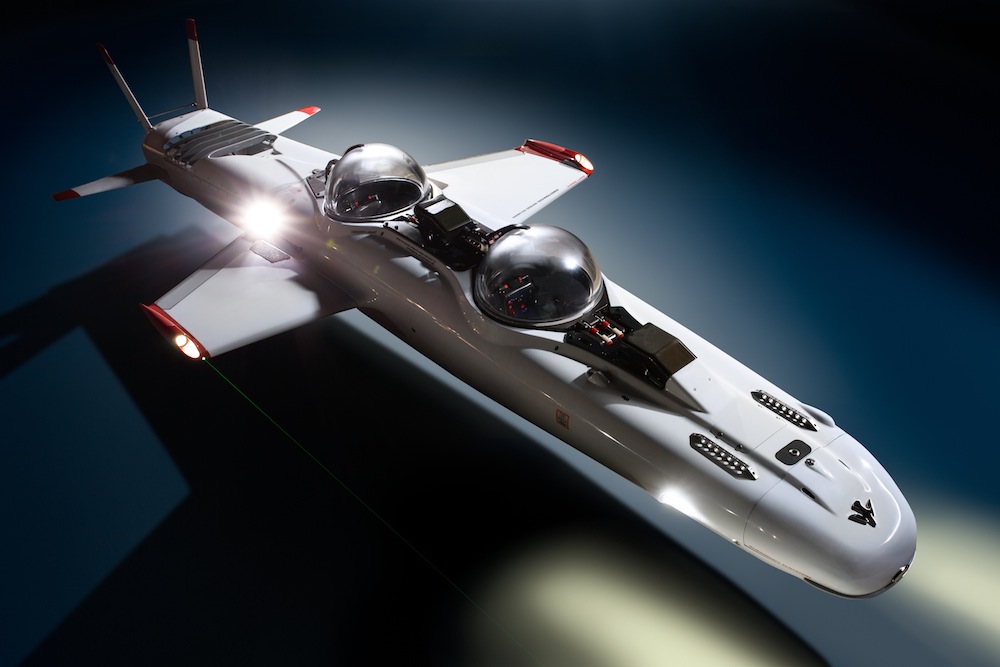When you buy through link on our site , we may earn an affiliate direction . Here ’s how it works .
Twenty old age in ontogenesis , the novel Osprey careen - rotor coil fly quicker and far than any helicopter and goes place airplanes never could .
How it FliesAs the Osprey lifts off in helicopter fashion , the onboard estimator , commanded by the pilot film , control it by changing the pitch of the rotor coil blades — the slant at which they prick into the melodic phrase as they spin around the hub . To accelerate the MV-22 into airplane - alike flight , the nacelle rotate forward , and the airscrew - rotor coil transition from beget lift and control the steering of the aircraft to just creating forward thrust . At high speeds the breeze flowing over the wing keeps the Osprey aloft . The helicopter controls slowly lock out , and the Osprey flies like a formal aeroplane , controlled by the aileron on the wings and the rudders and elevators on the tooshie .

Full-tilt Flying Machine
EnginesIf either of the two Allison AE 1107C turboshaft engines give out , a fundamental driveshaft inside the wing diverts power from the working locomotive engine to whirl the prop - rotor coil of the disabled one . If both engine run out in plane modality , the pilot burner can tilt them up to 60 degrees ( to keep the steel from hit the footing ) and glide to a controlled landing .
FuselageUp to 24 Marines or 20,000 pounds of geared wheel fit into the 864 - cubic - foot interior . The intense downdraft from the rotor pee it unimaginable for troop to go out from the side , so they skid down ropes from the rear ramp . Likewise , troops ca n’t fire machine guns from the side doors in the classic chopper style , in part because the engines and propeller stuff the field of fire . Instead there ’s a single gun in the rear .
Prop - rotorsThe MV-22 ’s 38 - foot - diam prop - rotors are more than twice the size of any propeller but small than many helicopter rotors . The inner sections are twisted like airplane propeller blade ; the outer section are true like rotor . The comeback - revolve blade negate each other ’s rotational forces , eliminating the need for a tail rotor to keep the fuselage uncoiled .

WingsTo support powerful locomotive and big whirling rotors at the wind , the wings are made almost entirely of superstrong and expensive atomic number 6 - fiber composite stuff , which also helps suppress vibrations .
Why Did It Crash in Testing?The MV-22 suffered four crashes in testing that killed 30 Marines . The bad , in Marana , Arizona , in April 2000 , kill 19 . The effort : a phenomenon called vortex annulus state ( VRS ) , which is specific to helicopters . VRS happens when a copter come speedily with little or no forward air pep pill . The aircraft dislocate into the Wake Island created by its own blades , and the churned - up air begins to recirculate through the rotor .
beguile in this vortex of disturbed airflow , the copter loses lift and begins to sink . Pouring on king — a buffer ’s instinctive response to a fall craft — only disturbs the melodic phrase further , have the birdie free fall quicker . VRS is so grave to disceptation - rotor because the effect can be asymmetric : If only one rotor coil experiences VRS , the aircraft will promptly seethe out of restraint instead of but sinking more rapidly .

The Osprey now has a VRS word of advice system of rules and its pilots are trained to recognize the sign of VRS and to break loose by simply easing the Osprey forward . But critic argue that this Achilles ’ heel compromises the Osprey ’s ability to navigate scrap zones with the focal ratio necessary to quash attack .
Specs : MV-22 OspreyWhat : First tilt - rotor coil aircraftSize:22.1 ft . ( h ) , 84.6 ft . ( w ) , 57.4 foot . ( l)Weight:27.5 tonsCost:$71 millionAir speed ( cruising):275 mphRange:500 miles with one refuelingMission : Marine Corps ravishment supportManufacturer : Bell Helicopter and BoeingVariants : CV-22(Air Force special - ops missions)Entering service : former 2007
















